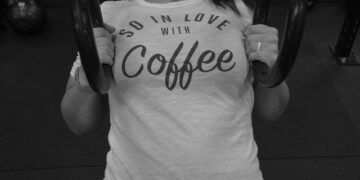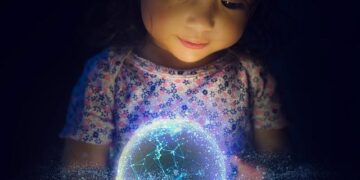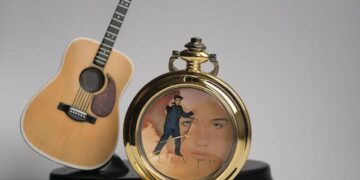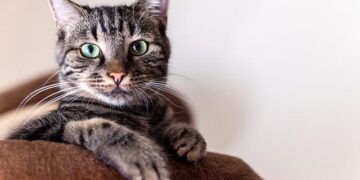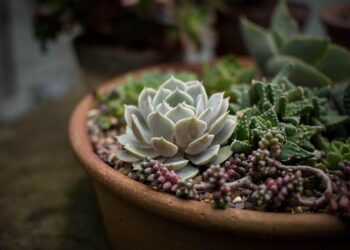My first trip to Sephora was made possible by a popular girl in my grade who had a 13 Going On 30-themed birthday party. The whole affair was wildly elaborate: the host’s mom gave me a $15 gift card that burned a hole in my pocket as I wandered the aisles alongside a handful of my classmates. I bobbed about like a buoy in a vast, glittering bay of products I had only ever heard mentioned by people older than me. The pair of eyeshadows I returned home with were more than a purchase. To me, they were souvenirs of a brief foray into womanhood.
Over the past few weeks, creators on TikTok have bemoaned the growing presence of young girls in Sephora. Some claim that the tweens and teens they’ve encountered in the store are rude and pushy. Others say the girls drain, steal, or trash the store’s sample products. But most question their presence in Sephora at all. “Should girls that age be buying Sephora’s pricey creams?” they ask.
It seems people are less concerned with young girls’ obsession with beauty than with their obsession with the right kind of beauty. If these young girls were clearing drug store aisles of Neutrogena and Aveeno, the discourse may not have reached such a fever pitch.
We asked half a dozen girls, three of their mothers, and a handful of Sephora employees to address some of the internet’s biggest questions about why young women are so drawn to the beauty giant.
Are more girls shopping at Sephora?
On the Saturday after New Year’s Day at a Sephora in the East Bay of San Francisco, about half of shoppers appeared to be under the age of 15. Some were dressed in pajamas and Crocs, others in jeans and Uggs. No Sephora employee would speak to me on the record but when I asked one if there were more tweens and teens at Sephora, one employee nodded her head “yes” in slow, solemn silence, as if I had just spoken of the dead. Another employee confirmed the increase in young girls and added hastily, “We are happy to welcome them.”
Outside the store, I find 11-year-old Lulu shopping with her friends Isla, Paige, Lucia, and Maeve. They stopped by Sephora before seeing a movie nearby, an outing chaperoned by Lulu’s mom, Laura. Standing in a semi-circle in the brisk afternoon breeze, the girls tell me they adore skincare and are sparing with makeup. They like a natural look and can’t wear much more than mascara and blush without violating their private school’s no-makeup rule. Of today’s Sephora purchase, Lulu says, “I just wanted a highlighter. I don’t like wearing concealer or any of that stuff.”
Alexia, 14, stopped at Sephora while her mom, Jeannie, perched elegantly on a bench outside. Alexia says she began shopping at Sephora when she was 10, perhaps earlier, to address her acne. “It’s all younger girls,” Jeannie says of the shift in Sephora’s customer base over the past two years, “When we walk in on the weekends, under 18 is the predominant age which is surprising because it’s not an inexpensive store, and you would think that maybe they would gravitate more to Ulta because it has both sides: the more wallet-friendly brands as well as the upscale brands.”
What’s fueling Gen Alpha’s love of Sephora?
Everyone I spoke to about this phenomenon points to TikTok. “Most of my feed would be like skincare products or makeup or just like stuff that you would find in Sephora,” Alexia says. She says her friends see the same content.
Jeannie, her mom, credits the Sephora craze to girls on social media “taking off their masks and filters and exposing their skin,” by which she means that young women are being more real about what their skin looks like and how they treat and cover it up.
In particular, the popularity of Get Ready With Me (GRWM) content — where someone styles themselves while talking to the camera — boosts interest in skincare and makeup among tweens. In general, Alexia says girls her age “follow people their age but also follow girls who are like in their 20s.” These older content creators “use retinol and stuff like that which is for older skin that [the tween viewers] don’t know better” than to use the same products.

One of Drunk Elephant’s “smoothie” kits of mini travel essentials, called “The Littles.”
Credit: Drunk Elephant
I talk to Annabelle, 12, over FaceTime. She plays five sports and attends an all-girls school in San Francisco. She’s been interested in skincare for “about a year” and says her favorite TikTokker is Isa Escu, who shares daily GRWM videos about her friends and college classes. Annabelle notes that Escu doesn’t focus on promoting particular products, in the same way as, say, 18-year-old TikTokker Katie Fang, whom Alexia and Annabelle credit with popularizing Glow Recipe’s Watermelon Glow toner. “I think she really blew up [that] toner because she used it so much and then like everybody started buying it,” says Alexia.
Sometimes it’s honestly not the result [of the product], it’s just the packaging.
The Watermelon Glow toner is the color of pink lemonade and comes in a clear glass bottle with smooth, gelatinous curves. In the glow of a ring light, it looks practically edible. When asked why they’re attracted to the products they buy, one of Lulu’s friends, Maeve admits, “Sometimes it’s honestly not the result [of the product], it’s just the packaging.” On TikTok and at school, “I see people I know getting stuff. And I realize that like I actually want to get it. I didn’t know I wanted it and then when I see that someone else has it and how they use it, I realize it’s something I’d actually use a lot.”
What are girls buying at Sephora?
“Whenever I walk into Sephora, I always go straight to the Drunk Elephant section,” says Annabelle, “Their packaging is very colorful and intriguing.” Packaging appears crucial to the success of Drunk Elephant and second-place favorite Glow Recipe. Sol de Janeiro, Summer Fridays, and Charlotte Tilbury are also popular among young women and girls.
“I see a lot of girls buying Drunk Elephant, and I think that it’s very, like, strong,” says Alexia, who says she avoids the brand. “I guess they kind of target younger groups [with] all their, like, colorful stuff. I think that young girls want stuff like that because it’s cute. But I don’t necessarily think it’s best for younger skin.”
Sephora staff conveyed similar concerns when asked about brands popular with young women. One employee noted that Drunk Elephant’s neon-capped concoctions, which are part of skincare routines the company calls “smoothies,” appeal directly to young women. The same employee said that Glow Recipe applies a similar approach, describing their products as “fruit-forward” and marketing edible-sounding products like their “watermelon glow pink juice” moisturizer to kids. Another example, the brand’s “Fruit Babies” collection, is a travel-sized set of best-sellers that “visibly tighten pores, soothe, brighten under eyes and hydrate for glowing skin” using avocado, guava, watermelon, and plum.

Glow Recipe’s “Fruit Babies” collection features products made with avocado, guava, watermelon, and plum.
Credit: Mashable composite; Glow Recipe
Do these products actually work?
Annabelle goes to a dermatologist who has evaluated her routine to ensure it’s safe for her skin. “I was ready for her to say all of it is junk, right? It’s all marketing,” says her mother Dorene, “But I was pleasantly surprised to hear her say, ‘No, these are good and you can keep these.'”
The derm underscored the importance of SPF. (“I can tell her but it’s different coming from someone else,” notes Dorene) and told her she needed to apply her serums before she put on moisturizer. The only product they nixed was the oh-so-popular Glow Recipe toner, and that was mostly for its fragrance.
What’s left is mostly from Drunk Elephant: a jelly cleanser ($34), hydration serum ($49), eye balm ($60), polypeptide cream ($68), and bronzer drops ($38). Supergoop sunscreen ($38) goes on top. The total price of her routine is around $287.
What if the derm had rejected all of her Drunk Elephant favorites? “I probably wouldn’t have kept using it,” says Annabelle. “I don’t see the point in using skincare if it’s not helping.”
Drunk Elephant founder Tiffany Masterson has gone on the offensive, using the brand’s Instagram and an interview with Ad Age to make her case. “There’s not an effort on our part to target or make money off kids or anything like that,” she told the outlet. “We have products for all skin, and not every product in our line is appropriate for every person. Acids and retinols are certainly not appropriate for pre-pubescent skin. We’re gonna keep repeating that as much as we need to repeat it.”
Who is paying for it all?
Alexia’s mom buys her skincare and says there is a limit. “I’ve always said with her and her [older] sister, ‘If it’s skincare I will buy it for them.’ If it’s makeup, I’m kind of like, ‘You kind of have to pay for that.'”
“They are very expensive,” Dorene says of the products she gifts Annabelle. “I put a great deal of importance in taking care of your skin ever since she’s been little… I want her to have a good routine. So I feel like investing in it is OK.” Regardless, Dorene says she still treats skincare like a reward for Annabelle. “Most of these items have been things that she’s asked for [and] earned…doing what she’s supposed to do…helping around the house, helping with her brother, doing her homework on time, getting up… That being said, I’m sure that it is difficult for people with different socioeconomic [considerations].”
During our conversation, Annabelle often emphasizes how long a product will last her or how little she uses to make it go further. This seems to be a larger trend. While Lulu’s mother doesn’t share whether or not she buys products for Lulu, she does note that “for some reason, they’re attracted to full-size products.” In a matter-of-fact tone, Lulu explains, “It’s because it lasts longer.”

Drunk Elephant products come in an enticing rainbow shades.
Credit: Mashable composite; Drunk Elephant
Is TikTok’s skincare obsession fueling the erosion of tweendom?
Teens have always wanted to grow up faster, to rush into adulthood.
“I was into [makeup and skincare], just in different ways,” says Dorene, Annabelle’s mom. “I would use my mom’s stuff. And when I was a teenager or tween, my parents would drop us off at the mall with friends and we would go to the different beauty counters and ask for samples.” For inspiration and trends, “We looked in magazines. Models like Cindy Crawford were who we looked up to.”
For Dorene, “The TikTok thing is really difficult because it’s not like a vetted source. [Annabelle will] say something to me that she got from the ‘news,’ something that’s gone viral, and it’s absolutely not true. There’s no accountability,” she explains, “We were influenced by magazines [where] there were checks and balances. Now there’s nothing.”
The tweens I spoke to seem to genuinely enjoy using skincare. “I think they like the idea of the routine,” says Lulu’s mom Laura. “They like having a ritual.” Throughout our 90-minute conversation, Annabelle used the word “fun” to describe her use of skincare more than a dozen times. She makes Get Ready With Me videos of herself because “they’re fun to do,” but she never posts them anywhere and often deletes them.
Annabelle tells me that her skincare routine is driven by “trends,” and I assume she means content trends like “douyin makeup” or glass skin. But as we chat, I discover that she thinks of trends in terms of products. “Glass skin is a trend, but I don’t see what I can do to participate in that,” she says, “I participate in buying the products.”
The participation even goes beyond consumerism. It’s a way to connect with other girls and form stronger bonds. Most of the products Annabelle shows me have been gifted to her not just from her family but her friends, too. They swap online wishlists ahead of birthdays and holidays or give each other new products to try out. A few girls I interviewed said skincare was also a way to connect with older sisters or cousins who are further along in their beauty journey.
Honestly, we’re just starting to go through puberty and, like, we know that we’re starting to explore makeup. It’s just judgy because we’re younger.
They know what people online are saying about them. “It’s kind of judgy because, like, they don’t know what we’re getting,” says Maeve. “Honestly, we’re just starting to go through puberty and, like, we know that we’re starting to explore makeup. It’s just judgy because we’re younger.”
“I don’t think I’m one of those people though,” Annabelle tells me. “They kind of say like, we’re people that like steal the products. I don’t use retinol. I just feel like I don’t tick the boxes of things that people get really annoyed about, and I hope I don’t because I wouldn’t like someone to do that to me.”
She usually wears makeup to go out in public, and even at home to make sure she is ready for whenever BeReal goes off, but “I don’t really feel the need to be presentable. I just enjoy it, I guess… I don’t see a reason to stop. If the makeup was, like, making me break out or something like that, then I probably would stop, but since it’s just…you know, making me feel happier, there’s no reason to stop using it.
What should Sephora, influencers, and parents do about it?
Liah Yoo, founder of Krave Beauty, says this is an opportunity for Sephora and influencers to “step up their merchandising game.” In an Instagram Reel about the phenomenon, Yoo noted, “If [tweens and teens] are going to go into Sephora, it might as well have a tween or teen section that curates a collection of products that are safe for these teenagers to use.” Yoo adds that Sephora’s efforts can’t end there. “That should come with an educational component with a lot of masterclasses for skincare beginners.”
Yoo also opined that “if you’re a creator or influencer with a lot of tweens and teens watching you, I think it’s a good opportunity for you to also do a lot of skincare content for teenagers.”
But some of these young influencers, like Katie Fang, are just learning to be adults themselves. Why should they shoulder the impossible weight of teaching girls their age how to care for their skin?
The discourse has, unsurprisingly, evolved into a parenting debate. Former Real Housewives star Bethenny Frankel, for example, weighed in on TikTok saying, “It’s psychotic that kids would think that they could spend $50 on a blush or hundreds of dollars in a beauty store… Girls that are my daughter’s age, that are her peers, talk to me like I’m their peer,” continued the reality star. “‘So what do you think of the Dior? Do you have the Drunk Elephant, do you have the Charlotte Tilbury?’ and I’m like ‘Bitch, you’re 14. We’re not on the same level.'” She lays the blame squarely on the parents.
In her interview with Ad Age, Masterson blames parents, too. “We have a responsibility as a brand, but part of this is a parenting issue. When do you allow your kids on social media? Do you allow your kids to storm Sephora with your credit card? I’m grateful for parents who choose to buy the brand for their kids, but I wish that wasn’t happening in Sephora because I don’t think that it’s appealing.”
She also tells the publication that the brand doesn’t gift products to influencers under the age of 18, though Ad Age astutely notes that Drunk Elephant has sent products to tween Kardashians North West and Penelope Disick. “People want me to just do a kids line and a teenage line, that’s what I’m hearing right now,” she told Ad Age.
The bottom line is that young girls don’t need older women looking down on them, they need guidance and compassion. Plus, they’re smart enough to know that they’re being marketed to. When I tell Annabelle that I remember the Glow Recipe Watermelon Mask craze of 2018, she nods. “I remember I looked at their Shark Tank video [from 2015], and I noticed the products were so unappealing. They got some funding, and I feel like what boosted their company the most was the packaging.”
Before we hang up our FaceTime call, Annabelle says thoughtfully, “I feel like Sephora is for everybody. I feel like this is the generation that we’re living in. I guess like there’s gonna be a lot of kids that go to Sephora and, you know, it’s just like the trend now.”
>>> Read full article>>>
Copyright for syndicated content belongs to the linked Source : Mashable – https://mashable.com/article/sephora-tweens-teens-drunk-elephant



